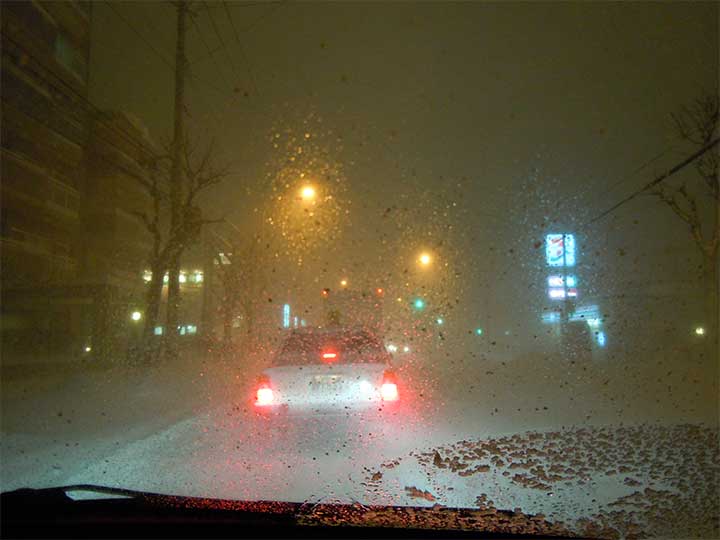Driving a car in winter is nerve-wracking for both locals and visitors. The most dangerous times are the beginning and end of winter, typically November and March.
At the beginning of winter, roads are partially covered with snow; some parts are dry, while others are wet and frozen. Especially after sunset, it’s hard to discern if the road is dry, wet, or icy. If you see a black-reflected surface ahead, it indicates an icy road. Curves on such roads are particularly hazardous, so it’s essential to reduce your speed to below 40 km/h and avoid sudden handling or braking.
In the middle of winter, when there is more snow, the road conditions become more stable as the snow is compacted by traffic, making it slightly easier to drive. However, the road conditions can change every second, so keep an eye on the road and stay updated with weather reports.
Tips
- If the center line is covered with snow, stay on the left side and slow down. Avoid going too far left, as you may crash into the icy wall or veer off the road.
- When driving uphill on a slippery road, be prepared for the difficulty to triple when driving downhill. Remember, stopping your car on a downhill slope is much harder.
- If your car gets stuck in heavy snow, turn off the engine and call 119 or for roadside assistance. Do not stay behind your car, as another vehicle could hit you from behind, leading to a fatal accident. Stay away from your vehicle for safety.
- Intersections are often very slippery. Avoid hitting the accelerator abruptly. Use second gear, press the pedal gently, and move slowly.
- Deep wheel tracks are hazardous. Even if you are driving under 40 km/h, you might lose control and spin into the opposite lane.
- Watch the entrances and exits of tunnels, which are often frozen and slippery. Avoid sudden braking and sharp handling.
- If heavy snow is falling and you need to stop, do not leave the engine running while staying inside the car. This can lead to carbon monoxide poisoning. Turn off the engine, call 119, and keep yourself warm.
- Avoid using old, studless winter tires. If the edges are rounded, even with sufficient tread, they are very slippery on curves or when changing lanes, which is extremely dangerous.
- Gas stations in rural areas often close early. Fill up your tank before sunset.
- Maintain a speed at which you feel safe. Ignore any cars rushing you from behind and keep a safe distance from the vehicle in front of you.
Dangerous points in Hokkaido
There are many traffic accidents happened everyday in Hokkaido. We show you where it is dangerous and not to drive.
Biei In the Winter
From route 237 to route 213 and railroad crossing point in Biei. This is one of the most dangerous point and many accidents happened. It is steep down hill from Biei to Asahikawa around the crossing point. A vehicle form Biei does not turn left completely and hit a car which is waiting on the corner.
DO NOT DRIVE this way even if Googlemaps show you as a short-cut way.
You may be indicated this route by Googlemaps or other Navigators.
Many locals doesn’t drive this way in the winter, especially icy condition. Most which have troubles are rental cars because they don’t know how dangerous it is.



